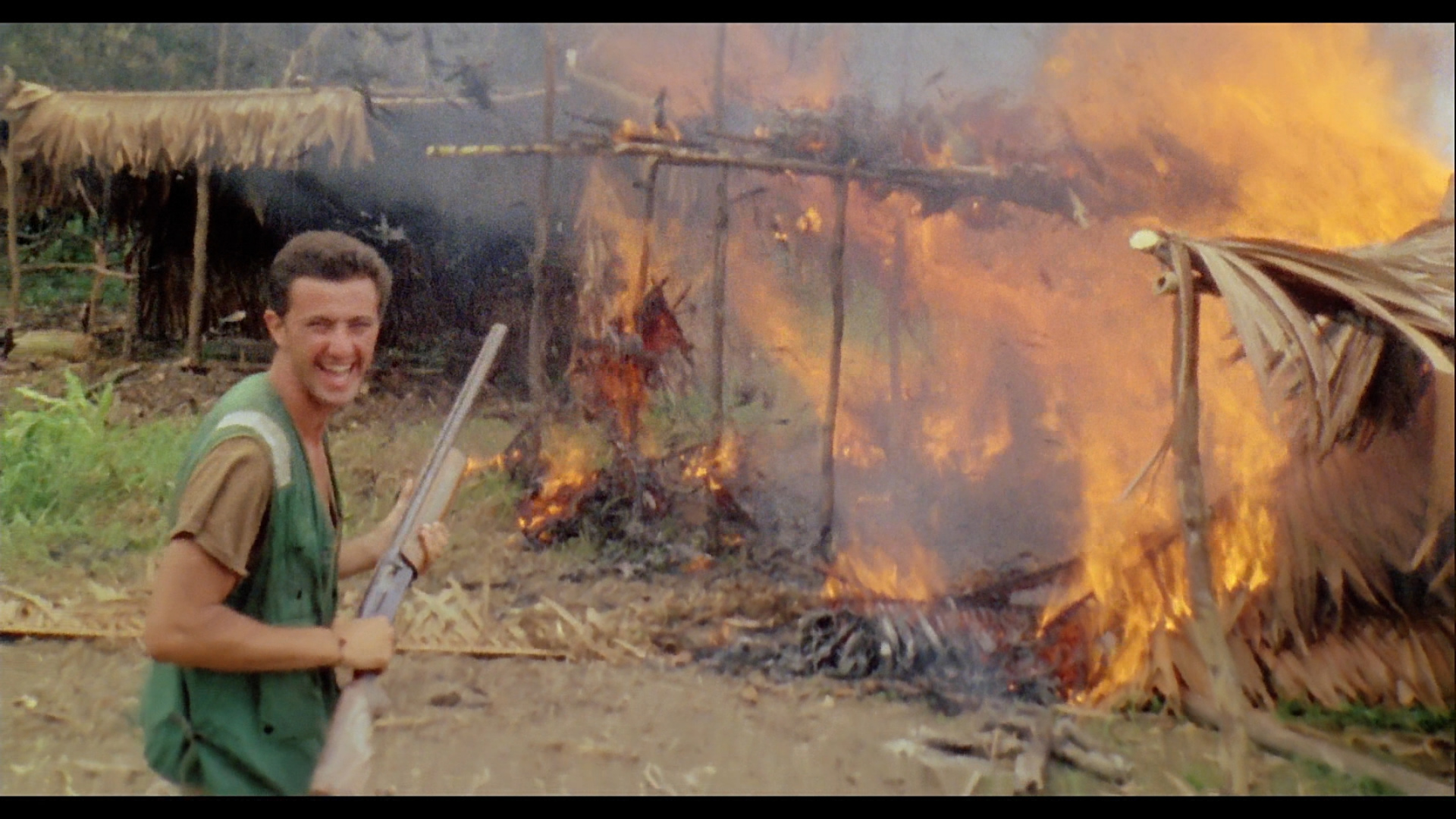
If You're Going to Watch "Cannibal Holocaust," Do it on Blu-Ray
When a film still holds power after 32 years the inclination would be to call it a classic or a watershed moment for the art form. Afterall, we are living in a time when movies are rushed out to DVD in a matter of weeks to avoid having the public forget about them forever. That said, no one outside of fans of extreme horror is lining up to bestow classic status on Ruggero Deodato’s “Cannibal Holocaust”. The reasons for this are myriad and well documented. The biggest factor for the film’s lack of acclaim is, of course, that “Cannibal Holocaust” will never escape the well-deserved backlash created by it’s scenes of authentic human violence perpetrated against animals. They are traumatic, unnecessary and indefensible. Having said that, it is worth mentioning that in the introduction of the film on Shameless’s new Blu-Ray re-release the previously defensive Deodato seems to be closer than ever to a complete mea culpa. Also worth mentioning is that his level of censure by the press and public was undoubtedly elevated due to a combination of factors not strictly limited to the volume and severity of the animal scenes in "Cannibal Holocaust” . The film’s subject matter and a general lack of critical appeal around the director’s filmography undoubtedly help to explain why guys like Tarkovsky, Herzog, Walter Hill and John Waters all managed to outrun their indulgences of filmed animal cruelty, but some three decades later it is still the first association that most people have when talking to or about Ruggero Deodato.
For those who haven’t seen or heard extensively about “Cannibal Holocaust”, the film is a split narrative that pulls back the curtain on the media’s desire to feed and promote the public's every grisly fascination. The first half of the film follows Anthropology Professor Harold Monroe. Monroe has been tasked by an American TV network to journey deep into the Amazon jungle to ascertain the whereabouts of world renowned documentarian Alan Yates and his crew. Monroe and his roughneck guide Chaco trek into the heart of ‘Green Inferno’ and make contact with two warring tribes, The Yacumo and the Yanomamo. They eventually find the remains of Yate’s crew, swap a tape recorder for the unopened cans of film and Monroe returns to New York to screen them with the network execs.
The second half of the film is mainly comprised of Yates and crew’s footage as it is being viewed by Monroe and the executives. We find out that Yates and his gang were not at all concerned with things like authenticity, journalistic integrity and the sanctity of the unmanipulated image. In fact by screening’s end the network brass backs off of airing the footage (as if) and Monroe is left to ponder how far the blessings of cultural refinement have carried us past the seeming cruelties of primitive peoples.
There is virtually nothing that hasn’t been said about Cannibal Holocaust during its 32 year lifespan. Its director has been excoriated and condemned but he has also seen his life in the public eye prolonged with the fresh tide of outrage that seems to accompany each DVD re-release of the film. The big question is can anything be done to the film to provide a compelling reason to watch it again, or is Shameless just the latest company to swipe Deodato’s no-limit cannibal credit-card? It’ll please many of you to learn that this incarnation does differ significantly from some of the previous releases. Obviously, it is the first time that the film appears in Blu-Ray format but it also includes a recut of the material overseen by Ruggero himself.
With the new cut Deodato attempts to de-sensationalize the animal cruelty and place more emphasis on the film’s themes and craftsmanship. Many of the animal killings are cut down from their original length or softened with jungle cut-aways, and post effects that simulate light leaks and aged, degraded film stock. The effort will probably have the desired effect of taking some of the edge off for those unfamiliar with the scenes in there entirety. The best of these instances involves the onscreen killing of the muskrat which unedited was a stomach and conscience churning exercise in pure suffering. The new edit removes the critter’s death altogether, albeit less than fluidly, and spares us all a little bit of our soul. The revised cut and the Blu-Ray enhanced version also work harmoniously in allowing the viewer to hone in on certain narrative and thematic details. I don’t know that any of it is particularly revelatory in terms of changing the overarching message but it does permit the viewer to start ruminating on themes earlier in the film and perhaps enables a deeper consideration of the director’s arguments.
Of course if you are really concerned with the well being of your soul you should steer clear of a film that features any amount of fabricated fauna death, horrendous sexual violence and fetuses being buried in mud. On the other hand Cannibal Holocaust persists as a sub-cultural phenomenon not simply for the public's perverse love it's violent content but because it is a violent collision of message and exploitation with both aspects sharing the spotlight long enough to make the ride worth taking for those inclined to do so. It’s a film that is morally indefensible and it is also perhaps the most effective argument against unchecked media morality that has ever been made. Shameless and the director have authored what should be the final chapter in the film’s history with a great looking enhanced transfer of both cuts, two worthwhile featurettes and some other goodies tucked in beside. If you haven’t seen “Cannibal Holocaust” and have some curiosity about it, this is the best way to experience it (in particular the new cut). If you have seen it, it is up to you whether the changes mentioned above make it worth another look.

